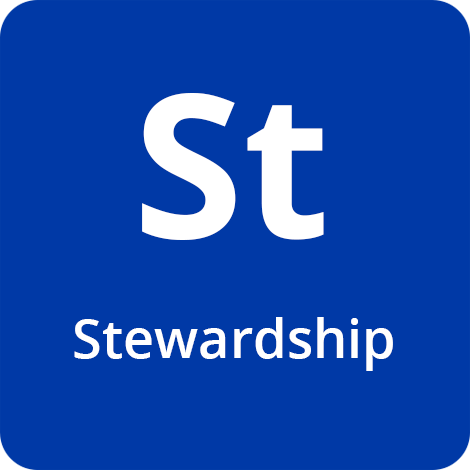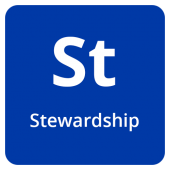How do we manage, administer, and provide stewardship for these funds?
The structure of a local wellness fund includes how organizations manage leadership, build partnerships, and provide stewardship over the funds’ resources.
In some instances, local wellness funds emerge from an existing collaborative as a natural part of work that they are doing in community health improvement. In other cases, a local wellness fund is started to address a specific opportunity or gap in community health funding.¹ As a local wellness fund emerges or is created, it is critical for the organizations involved to build and design the structure of the fund. Structure is a core component of a local wellness fund that defines the governance, oversight, and accountability for a wellness fund. How organizations manage, administer, and provide stewardship for a local wellness fund is guided by their structure.
The structure of a local wellness fund can vary widely in areas such as backbone functions, administrative models, finance management, formality of partnerships, and the number and type of sectors represented. One common structure relies on a multisectoral partnership and decision-making group, but many funds are managed by a single decision-making body that is informed by a partnership or steering committee. In some instances, the decision-making group and the group that administers the fund itself are different, with the later acting like a fiscal agent. Engaged sectors most often include hospitals and health providers, foundations, banks and Community Development Financial Institutions, and nonprofit organizations focused on health and human services.²
As local wellness funds design and define their structure, they may grapple with a number of challenges and questions including:³
- What governance model will best fit their goals?
- How much formality and documentation is needed and wanted among partners?
- How do you bring together partners that may have traditionally been in competition?
- How do you honor partners’ needs while also investing collective impact?
- How might power disparities and racism be addressed through shared funds and shared decision-making?
In the formative stage, collaboratives may benefit from facilitation and support from catalyst organizations to help create their initial structure and governance. As funds mature, more specialized technical assistance may become necessary to help address the legal, administrative, and business details of implementing and operating funds.
To learn more about each element, select the name of the element.
Elements
Three key elements of the structure of a fund are leadership, partnership and stewardship.

Leadership provides the grounding and direction for a fund and can help partners across sectors to work together effectively to achieve shared outcomes. Many local wellness funds will have a board of directors or a similar oversight or advisory group in place to guide the fund and support decision-making. However, consolidating decision making can be a challenge to equity among partners and there is a tension between “going fast and going together.”³ In some models, the board of directors supports an individual — the fund director or leader. Notwithstanding, multisectoral, adaptive, and risk-tolerant leadership is a driver of success for local wellness funds. A diverse leadership structure in a locally appropriate collaborative governance model can effectively transcend competition and withstand leadership changes.⁴

Partnership entails organizations coming together and working to create shared goals and structures for managing and distributing funds. For local wellness funds, engaged sectors most often include health providers (e.g., hospitals or health systems), foundations, banks and Community Development Financial Institutions, and nonprofit organizations focused on economic development and health and human services. Fostering cross-sector relationships, and investing in capacity building among partners and the community may increase resiliency and open doors to new funding sources.⁴ In building partnerships, a commitment to trust-building processes is important to collaboratives that do not have a long history of working together and usually have even less history of co-mingling or co-managing financial resources.³ Many local wellness funds will have a backbone or convener organization in place; in some models, public health or community foundations can act as a neutral convener. In some instances, formal agreements complement charismatic leadership. As a part of building partnerships, funds are strengthening their work to advance equity by finding ways to engage community and build civic muscle, defined as the power to “influence the policies, practices and programs that affect them.”⁵

Stewardship is a key part of the oversight and accountability for a fund. As part of safeguarding operational integrity, it is important for the fund to develop capabilities for financial management, budgeting, billing and accounting, grant making, analysis and financial reporting, and fundraising. Some collaboratives set up a separate administrative body (or third-party administrators, 501c3, etc.) to provide financial oversight to the fund. Decisions about allocation priorities generally remain at the level of the collaborative governing body to reduce the risk of vested interest of the administrating body interfering with community needs being addressed.³ Another key piece of financial stewardship that is closely tied to both uses and sources, is building capital absorption capacity, defined as “establishing shared priorities, creating a pipeline of investable projects, and strengthening the enabling environment of policies and practices required to achieve the desired results.”⁶ By building capital absorption capacity, a local wellness fund can help to bring new investment into a community where it is needed most.
Key Takeaways
- The structure of a fund may vary depending on the partners involved, source of finances, and intended uses.
- Fund structure may also change over time as the fund grows and matures.
- Multisectoral and multilingual leadership are perceived to be a driver of success for a fund.
- Diverse leadership and collective stewardship can transcend competition between organizations and create the resiliency to withstand leadership changes.
- Fostering cross-sector relationships and building strong partnerships can increase adaptability and unlock new funding sources.
- It is key for a fund to have a clear strategy, vision, and mission, and to build shared goals among partners.
To learn more about each topic, select the element box.
Three key elements of the structure of a fund are leadership, partnership and stewardship.
Leadership provides the grounding and direction for a fund and can help partners across sectors to work together effectively to achieve shared outcomes. Many local wellness funds will have a board of directors or a similar oversight or advisory group in place to guide the fund and support decision-making. However, consolidating decision making can be a challenge to equity among partners and there is a tension between “going fast and going together.”³ In some models, the board of directors supports an individual — the fund director or leader. Notwithstanding, multisectoral, adaptive, and risk-tolerant leadership is a driver of success for local wellness funds. A diverse leadership structure in a locally appropriate collaborative governance model can effectively transcend competition and withstand leadership changes.⁴
Partnership entails organizations coming together and working to create shared goals and structures for managing and distributing funds. For local wellness funds, engaged sectors most often include health providers (e.g., hospitals or health systems), foundations, banks and Community Development Financial Institutions, and nonprofit organizations focused on economic development and health and human services. Fostering cross-sector relationships, and investing in capacity building among partners and the community may increase resiliency and open doors to new funding sources.⁴ In building partnerships, a commitment to trust-building processes is important to collaboratives that do not have a long history of working together and usually have even less history of co-mingling or co-managing financial resources.³ Many local wellness funds will have a backbone or convener organization in place; in some models, public health or community foundations can act as a neutral convener. In some instances, formal agreements complement charismatic leadership. As a part of building partnerships, funds are strengthening their work to advance equity by finding ways to engage community and build civic muscle, defined as the power to “influence the policies, practices and programs that affect them.”⁵
Stewardship is a key part of the oversight and accountability for a fund. As part of safeguarding operational integrity, it is important for the fund to develop capabilities for financial management, budgeting, billing and accounting, grant making, analysis and financial reporting, and fundraising. Some collaboratives set up a separate administrative body (or third-party administrators, 501c3, etc.) to provide financial oversight to the fund. Decisions about allocation priorities generally remain at the level of the collaborative governing body to reduce the risk of vested interest of the administrating body interfering with community needs being addressed.³ Another key piece of financial stewardship that is closely tied to both uses and sources, is building capital absorption capacity, defined as “establishing shared priorities, creating a pipeline of investable projects, and strengthening the enabling environment of policies and practices required to achieve the desired results.”⁶ By building capital absorption capacity, a local wellness fund can help to bring new investment into a community where it is needed most.
- The structure of a fund may vary depending on the partners involved, source of finances, and intended uses.
- Fund structure may also change over time as the fund grows and matures.
- Multisectoral and multilingual leadership are perceived to be a driver of success for a fund.
- Diverse leadership and collective stewardship can transcend competition between organizations and create the resiliency to withstand leadership changes.
- Fostering cross-sector relationships and building strong partnerships can increase adaptability and unlock new funding sources.
- It is key for a fund to have a clear strategy, vision, and mission, and to build shared goals among partners.
Accountable Communities of Health: Legal and Practical Recommendations
This report by ChangeLab Solutions provides an overview of Accountable Communities of Health (ACH) and offers both legal and practical guidance based on research for creating and managing an ACH. The report provides a summary of five recommendations which local wellness funds considering structuring their wellness fund as an ACH can utilize to maximize the unique assets and resources of the communities served.
Example Bylaws for Governance Committee
This resource, adapted from the Katahdin Trust, provides sample bylaws for a network or partnership. Local wellness funds can use these sample bylaws to draft governance documents for their partnership or collaborative.
Progressive Stages of Organizational Structure
This resource, adapted from the Katahdin Trust, outlines leadership arrangements that may suit a local wellness fund during different stages of their development. Local wellness funds can use this document to help guide their structure and governance as they grow and mature.
Western Idaho Community Health Collaborative (WICHC) Charter
This is a governance document from the Western Idaho Community Health Collaborative. This resource provides local wellness funds with an example of how a fund outlined their key functions, membership structure, member expectations, and meetings.
Aligning Across Sectors: Key Considerations for Governance Measurement
This brief offers a variety of measures and theories pertaining to governance. Local wellness funds can use this to learn more about governance and evaluation for multisectoral collaboratives.
This article in The Foundation Review explores the origins and structure of the Philanthropic Collaborative for a Healthy Georgia and examines its first initiative, encourage the development of school health programs in Georgia public schools serving low-income children without access to health services.
- Funder Forum for Accountable Health, & Georgia Health Policy Center. (2019, September). Local Wellness Funds. Retrieved from https://accountablehealth.gwu.edu/sites/accountablehealth.gwu.edu/files/Local%20Wellness%20Funds%20Brief.pdf
- Georgia Health Policy Center. (2019, September). Advancing the Practice: Discovery Phase. Retrieved from https://ghpc.gsu.edu/download/advancing-the-practice-discovery-phase/?wpdmdl=4753310&refresh=6142a512e67181631757586
- Georgia Health Policy Center. (2020, February). Local Wellness Funds Learning Journey Cohort Meeting: Structure. [PowerPoint Slides].
- Georgia Health Policy Center. (2020, April). Local Wellness Funds: Advancing the Practice Annual Report.
- Auchincloss, E. D. (2021, February 16). Cultivating Belonging and Civic Muscle to Advance Equity. Rethink Health. Retrieved from https://rethinkhealth.org/Resource/cultivating-belonging-and-civic-muscle-to-advance-equity/.
- Center for Community Investment, & Lincoln Institute of Land Policy. (2019, January). Defining Shared Priorities. Retrieved from https://centerforcommunityinvestment.org/sites/default/files/2019- 01/Defining%20Shared%20Priorities_0.pdf.









